One of the benefits of an extended climbing career is the accumulation of stories: souvenirs that you get to share with others; memories, little sensory details that take you back to all the travels you did and routes you climbed and partners who held your falls, many of whom may no longer be around. Here’s one story from long ago: a time spent in a country that no longer exists while climbing with a now-deceased dear friend, Wolfgang Gullich.
In the spring of 1985, I arrived for a long vacation in West Germany to hang and climb with Wolfgang. For those who don’t know or were born after his death from a car accident in 1991, Wolfgang Gullich was arguably the strongest and most standard-setting rock climber of my generation, having established the world’s first 5.14a (Punks in the Gym; 1985), the first 5.14b (Wallstreet; 1987), and the first 5.14d (Action Directe; 1991), which he trained for by laddering up and down an overhanging board of wooden rungs at the Campus Training Center in his university gym; hence, the term “campusing.”
This was also a time of seismic change in the world of climbing. During the 1970s the U.S. was the epicenter of rock climbing. The definition of free climbing, with all the rules (no hang-dogging, no pre-inspection and certainly no rap bolting) was more or less an American invention, based somewhat on what had been going on in Britain as well. The European continent had lagged far behind the standards in the U.S and Britain. Those big limestone cliffs were being used to train for alpine climbs and just waiting for something to happen. Sport climbing was quickly accepted in Europe, generally speaking, but not without some issues. Wolfgang and a gaggle of other Euros started pushing hard once the drills came out and the idea of practicing moves before a “red point” attempt. Anyone around in the U.S. climbing scene in the early to mid-1980s will remember the divisiveness sport climbing caused in the scene, but that’s another story.
What I took to heart when traveling was essentially a “when-in-Rome” attitude. If I was in the Frankenjura, dog away. If I was at home at a trad crag, lower after falling; no bolts; and basically yo-yo the route. All the styles were challenging in their own way. And the mix made the sport stay fresh for me as well.
Wolf & I had already had some tremendously fun times together in years past and planned several months of climbing around Europe for that spring and summer. First stop: Elbsandsteingebirge, the famous sandstone towers surrounding Dresden, East Germany.
People have been climbing around Dresden since the late 1800s, and the routes here were not for the faint of heart. There were actual rules to follow. Among these rules was disallowance of any metal protection. No nuts and no cams. You were allowed, however, to place knotted slings: big balled-up knots that you would wedge/jam into the crack.
There were big, honkin’ ring bolts, strangely enough. A ring bolt is an 8-inch-long iron rod of 1-inch-diameter steel, with a giant ring at one end that makes it look like a medieval door-knocker. That was the good part. The not-so-good part? They were often spaced a very, very long ways apart. Even more intimidating was the forbiddance of chalk. Could you break the rules? Some visitors did, but it was frowned upon. Essentially, in Dresden if you were to place nuts and cams, and climb with chalk, you’d be lucky if you didn’t get your ass kicked—but honestly what would have hurt even worse than a punch to the eye would’ve been the feeling that the East German climbers didn’t respect you.
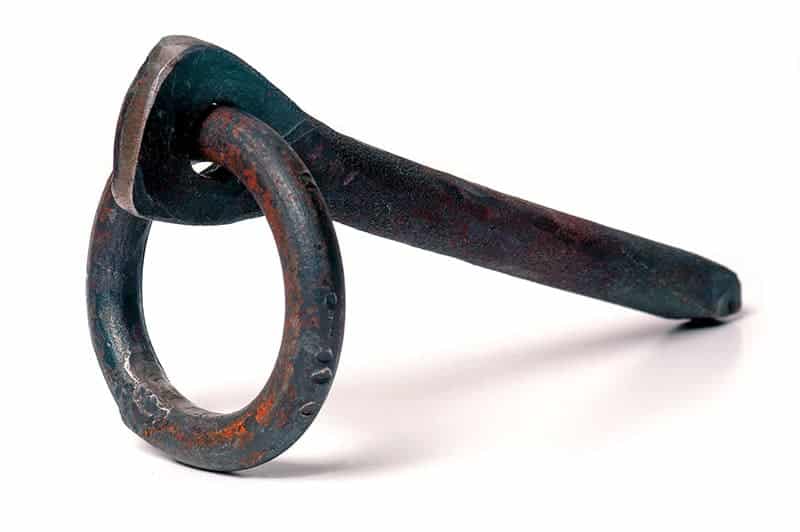
This was Wolfgang’s 12th trip to Dresden, and there would be no shenanigans. We’d climb by the book. The East German one, that is.
We were hosted by Bernd Arnold, who had authored many of the most difficult routes of the day around Dresden. Bernd was a legend in the climbing world at that time, known for his incredibly bold and difficult routes on those sandstone towers. He had become known to American climbers by way of an article Henry Barber wrote in the late 1970s. Henry was one of America’s premier climbers of the ’70s, traveling the world and doing all the hardest routes at every area he visited. In East Germany, he met Bernd and brought home stories about Bernd’s hair-raising ascents in Dresden. I had read that article many times and had taken notes on a great list of routes that I needed to do while there.
We arrived at Bernd’s, having endured a very long drive and an interminable crawl through East German security at the border. Finally at the house, I met Bernd, his wife Christine and their daughter. I didn’t speak German, and Bernd didn’t speak English, but it really didn’t matter much. We spoke climbing. Wolfgang would sporadically translate something if he felt it was relevant. We plied Arnold’s family with quality coffee and chocolate, highly prized gifts, and went off to grab a bite to eat at a nearby hotel.
Sitting at a table, I pulled out a crumpled piece of paper from my pocket, which were my notes from Barber’s article on which routes I needed to do while in Dresden.
“What’s that?” Wolfang asked.
“The list of routes I gotta do here,” I said.
Wolf snatched the paper from me and looked at it for two whole seconds before crumpling it back up and throwing it over his shoulder. “Forget these climbs,” he said in his fully Teutonic accent. “They are not very hard and some are just dangerous. There is no reason to do them. We will use my list. Why risk your life on easy routes?”
OK. There was probably some kind of logic there. But mostly, Wolf wanted to do his list of routes, which, naturally, were the hardest routes put up since his last visit to Dresden. Generally speaking, Wolfgang explained, the harder routes had better protection. This meant more frequent ring bolts. We’d usually get one every 25 to 30 feet instead of 40 to 50. Yay.
Again, because rock climbing was still an emerging sport, there were few universal ideas. In Dresden, for example, routes called “free climbs” were not “free” by the definition understood in the West, and often contained sections of aid that almost always came right before and right after the placement of a ring-bolt.
Here’s why: These “free” climbs were all done from the ground up; a fairly universal traditional ethic of the day. However, while establishing a new route, when the leader got to a place to drill a ring bolt, anything went.
Usually the leader would get to a spot where he could jam some kind of knot in a crack, and hang from it while drilling. Once the bolt was in, that often became the belay. From the belay, the second would come up. Here, it could get interesting. If the next holds were not close to the ring bolt, standing on your belayer’s shoulders, head, whatever, was all fair game.
In terms of Dresden grades, all the hardest routes were giving a difficulty grade of X (10). But really, the grade was as meaningless as calling every route at the Motherlode in the Red “hard.”
Wolf and I were there to redpoint these routes, or at least “free climb” them from a more Western definition. This created an inherent problem: As you might expect, often times, right before the respite of the ring bolt, and right after same, the rock would provide hideous boulder problems, along with anal-clenching fall potential.
Yet with my list of classic, easier climbs crumpled and thrown away, and Wolfgang’s list of grade X climbs firmly in hand, our adventure began.
The next few days was a blur of huge lobs, frustrating moves and filthy t-shirts from continuous hand wiping in lieu of chalk as we began ticking many of Bernd’s latest routes. One of my most vivid recollections involved sitting on an ants’ nest and having my scrotum stung to hell by the angry little insects.
But the route, and story, that I’ll never forget from this trip is a climb called (after translation) “Balance of Soul.”
It was, of course, one of Bernd’s routes—and it was stunning: A gorgeous, clean, dead vertical corner seemingly devoid of grips for hands or feet. And it was waiting for a second ascent.
At the 20-25 foot mark was ring-bolt #1. At about double that distance was bolt #2. It doesn’t take a genius to do the math to know that you don’t want to fall before clipping bolt #2.
Turned out that even getting off the ground to reach bolt #1 was no simple task. After some poor attempts, Wolf reached that point. Then, he pitched about 10 feet above the bolt and I lowered him to the ground. My turn!
I struggled with the opening sequence, but got to the first bolt. I looked up for the next piece of protection and had to squint to see it. The next ring-bolt was so far above me, it may as well have been on Pluto.
I started smearing and stemming my way up the dihedral. There really weren’t any holds to speak of; just slight differences in angle or texture of the wall here and there, like pressing your way up two panes of glass. I felt far from secure, but I plugged along, doing my best to ignore the increasing gap between me and my long-departed haven of ring bolt #1.
Soon, I looked up and saw #2, my savior. Just a move or two above me, and the second ascent would be in the bag!
Fuck me if I didn’t blow it. I rushed a foot switch and went flying. Grounder, here I come. What are emergency rooms in East Germany like? At least they probably won’t charge me.
My life didn’t flash before my eyes. I just knew I was going to hit the ground. But … I didn’t. Wolfgang, seeing the situation and having time to react, ran downhill from the belay. I stopped with my legs tucked, about two feet off the deck.
Now, here’s the truly crazy thing. Wolf’s eyes were fully bugged out. I’m sure mine were the same. And do you know what the first thing he said to me was? Not “Wow, that was crazy!” Not “I can’t believe you’re alive!”
All he said was: “You’ll get it next time.”
Right? Like I’m going back up there?
But because he said that, and because it was Wolfgang, I did go back up there. He was that kind of partner; the one you’d unflinchingly trust to save your life, and who always brought out the best in you. I didn’t even untie or stop to think about it. I got right back up on that rig and climbed it.
Funny enough, I was so focused on not blowing it again, that I never looked up for that next bolt. In fact, I almost climbed right past it until Wolfgang yelled to me:
“Russ! Clip the bolt! Clip the bolt!”
Oh, yeah … I clipped it when it was already at waist height. Go figure.
There are these nutty moments for all of us where we take unfathomable, truly unreasonable actions. Getting married is probably one of those. Going back up on a death route is another.
For me, Balance of Soul is one that sticks in the craw. When I think of Wolfgang, which is often, Balance of Soul comes to mind. It’s not that it was a culture-shifting send; it was just one of the ticks on Wolfgang’s list. It didn’t change the grading system or even count as one of my hardest routes. If 8a.nu existed, it wouldn’t have made much mention. The important personal memory is about two buddies sharing an adventure together and having a good time doing so. You can be sure we had coffee and cake that afternoon. Likely some beer and wine that evening, but I truly don’t recall. “You’ll get it next time,” however, is a line I will never forget.
Wolfgang and I did tick his list while there. In doing so, we spent not only our adrenal glands but also our rope, which had come to East Germany in a plastic bag, brand new. That rope left with over 1,000 feet of accumulated falls on it. And as for me? I left with an optimistic sense of where the sport of climbing was headed. Wherever Wolfgang took me next.


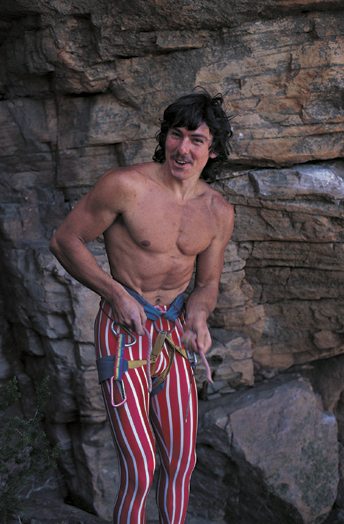
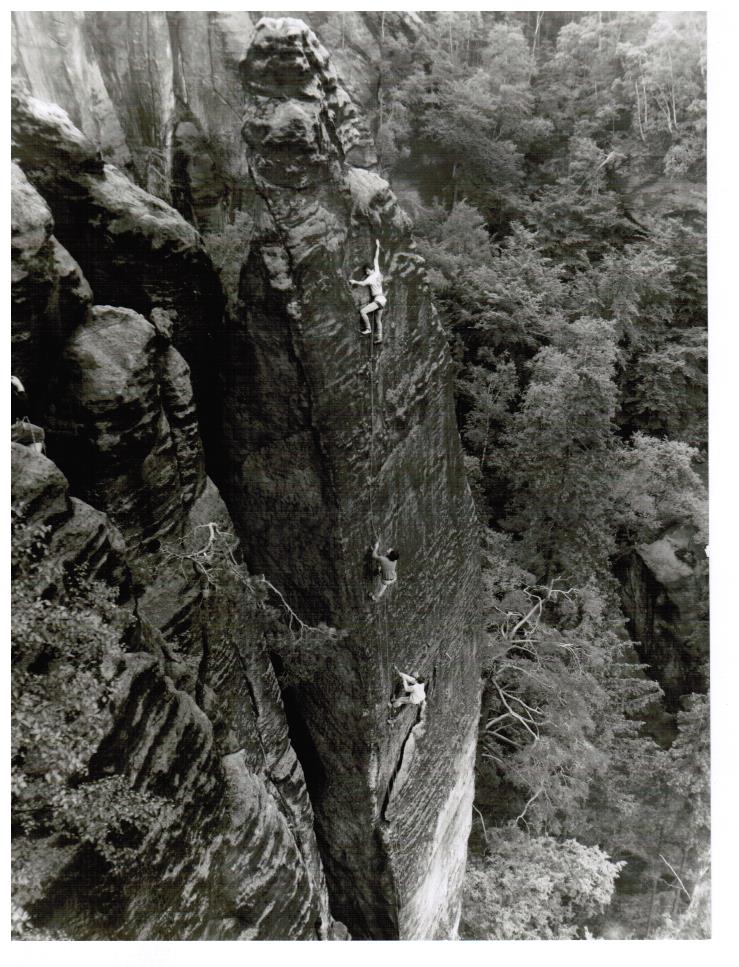
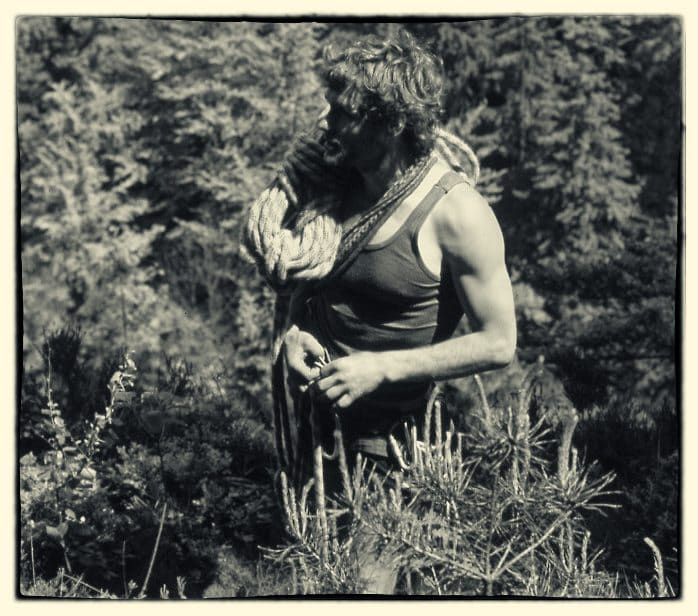
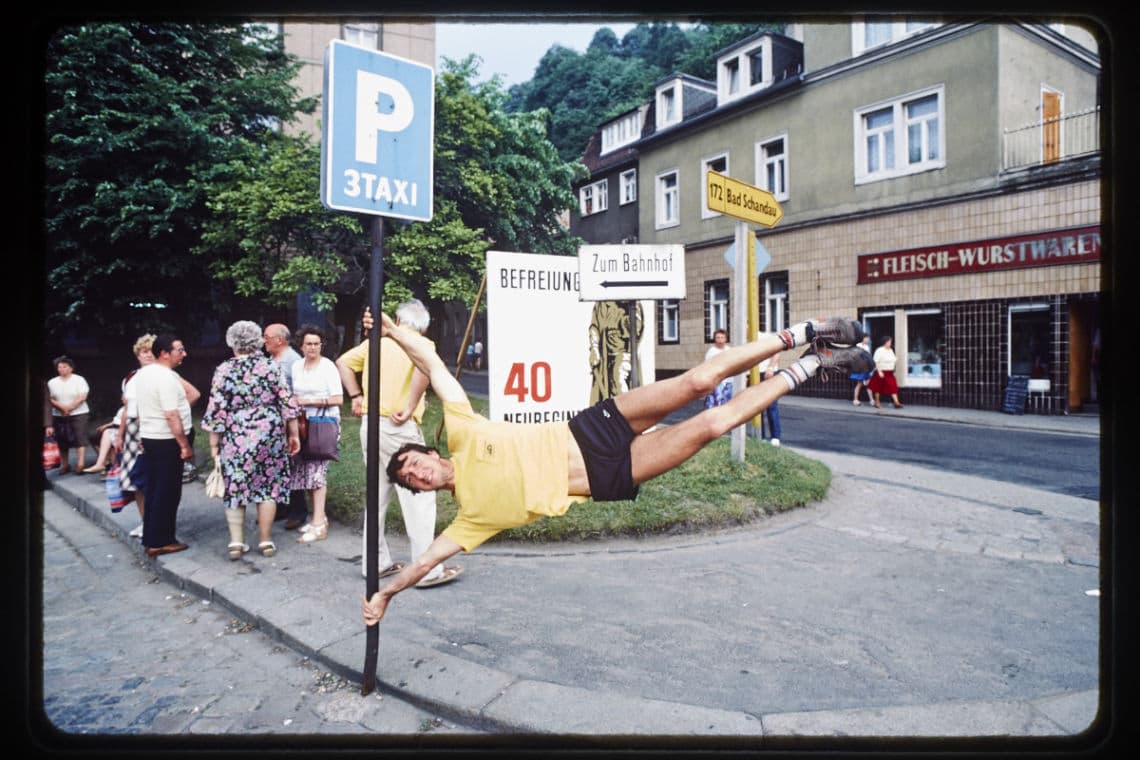
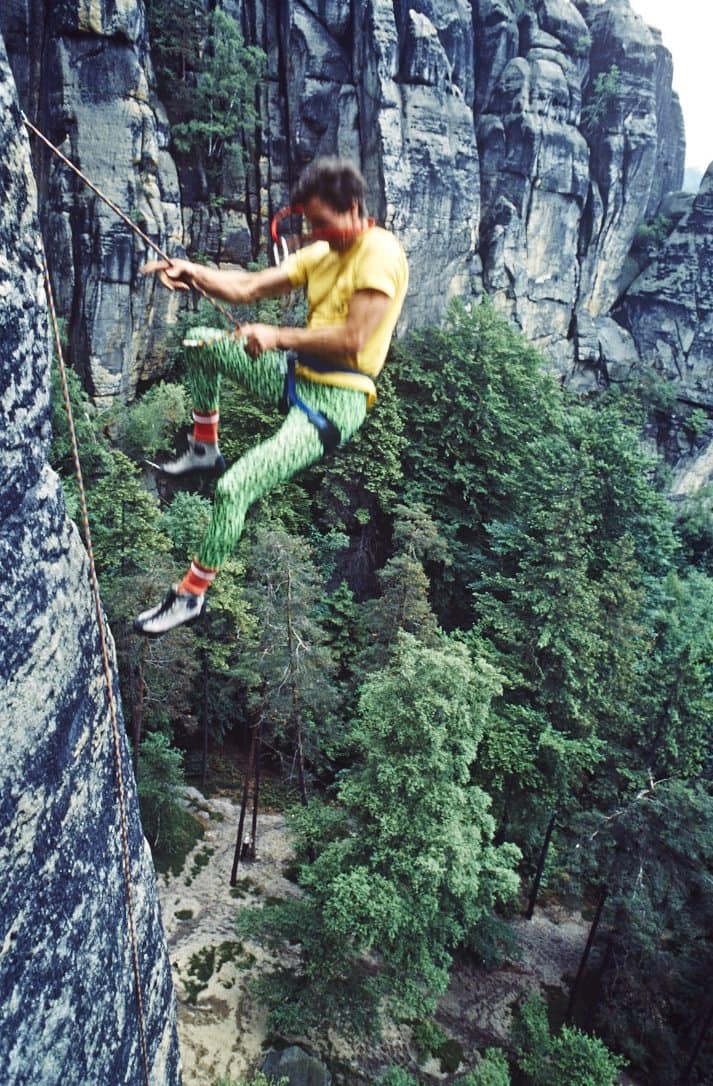
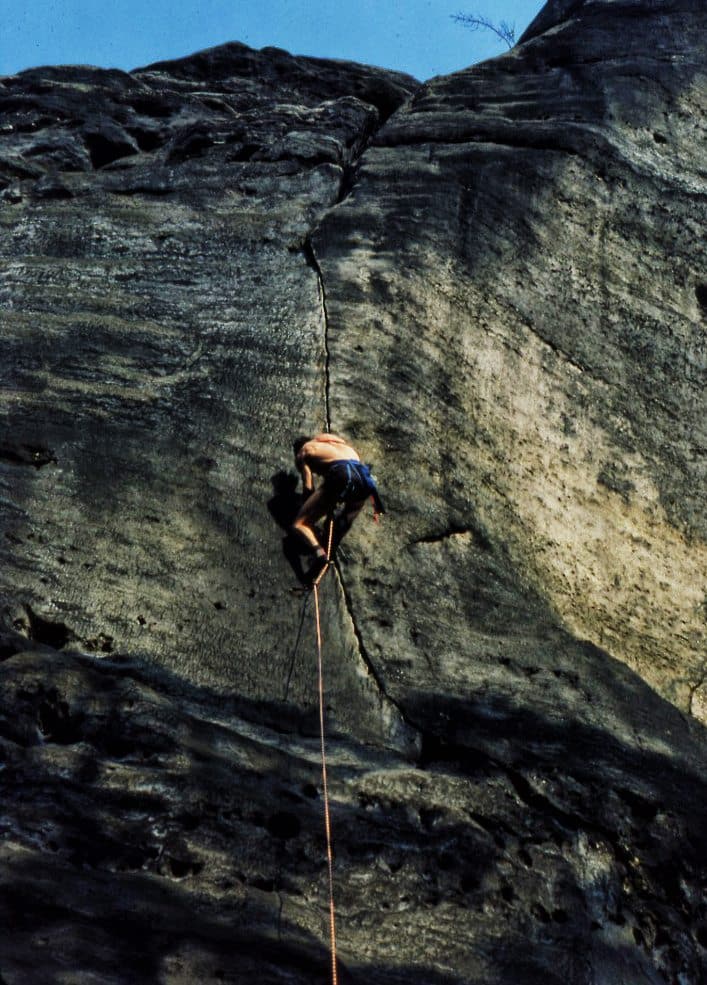

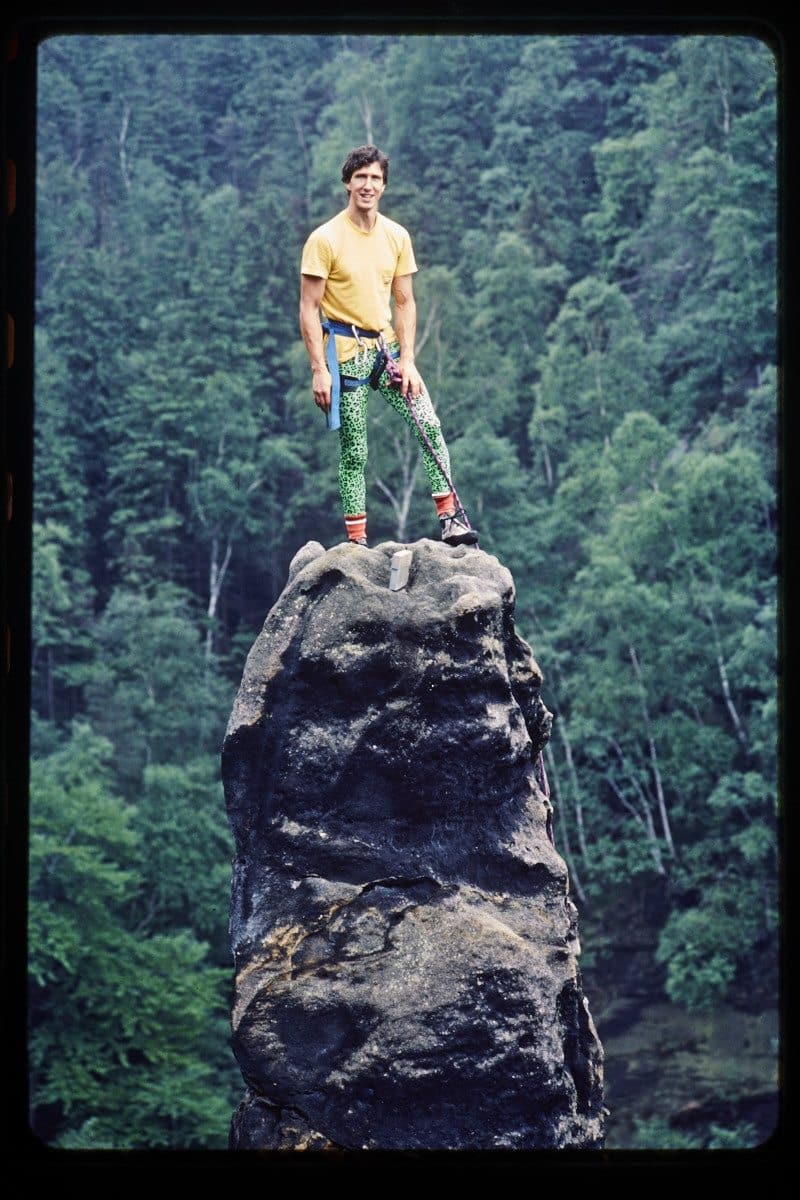


Awesome! Great story Russ.
> The European continent had lagged far behind the standards in the U.S and Britain.
Lots of interesting history there. I’m an expat Brit living in Bavaria, and climbing in the eastern Alps is a continuous education in just what a primitive backwater British climbing was before WW II compared to what was being done in the Dolomites and the Kaisergebirge. The US I gather even more so. That didn’t really change until the Brown-Whillans era in the 1950s, and even then there were still people like Messner (when he still had toes) climbing upper 5.11 in the Dolomites in the 1960s .
You have an amazing memory for detail Russ. Thanks for a great read and glad to see you are still out there and getting it done!